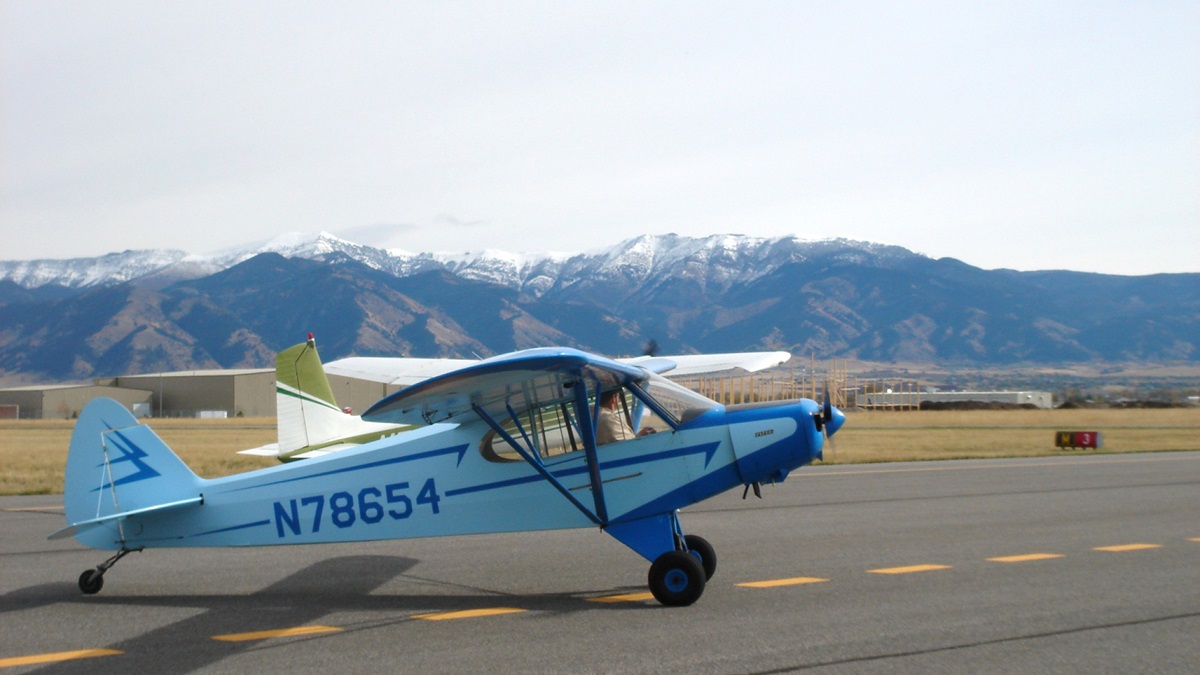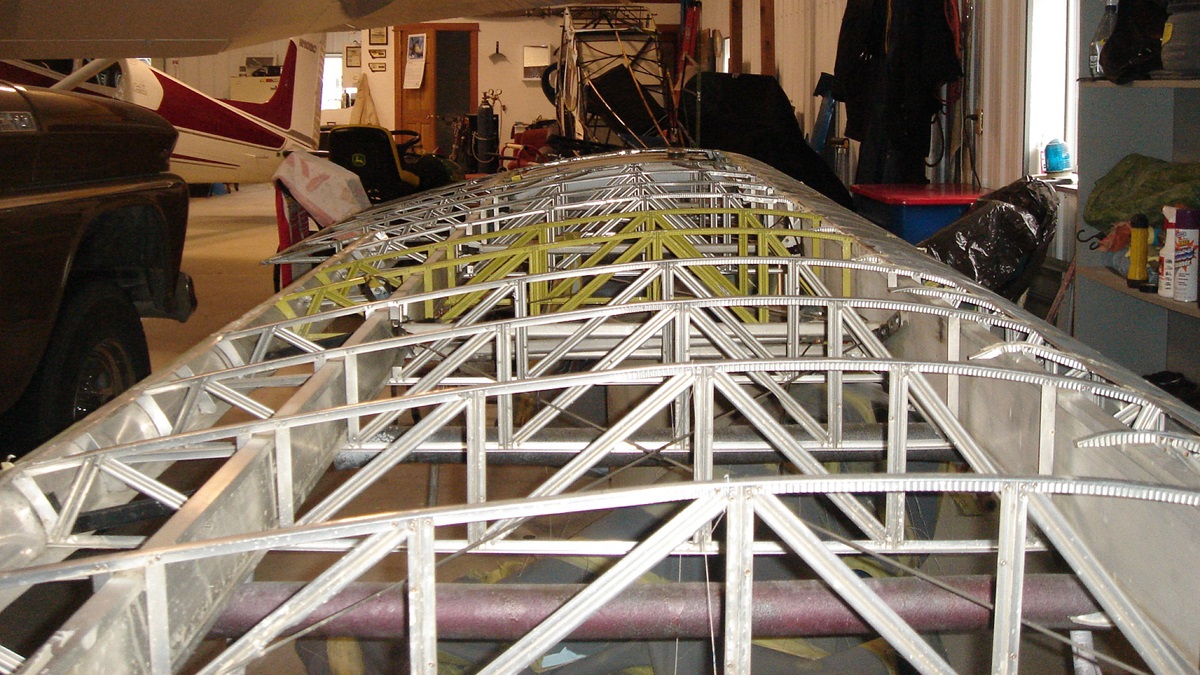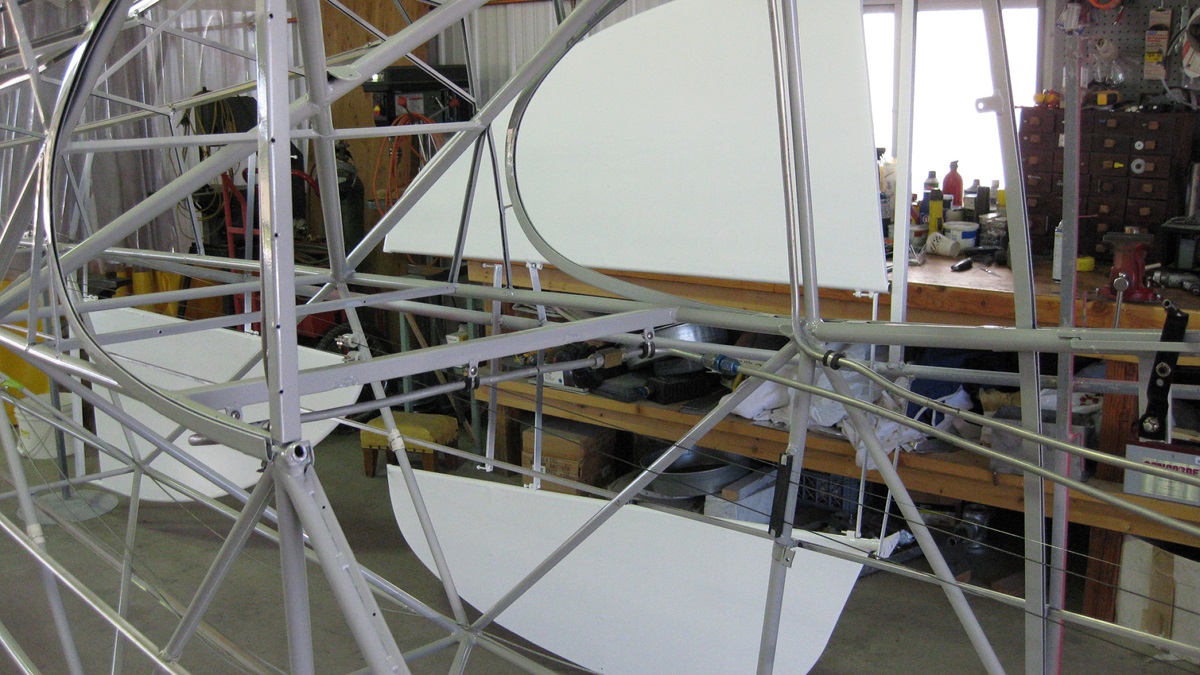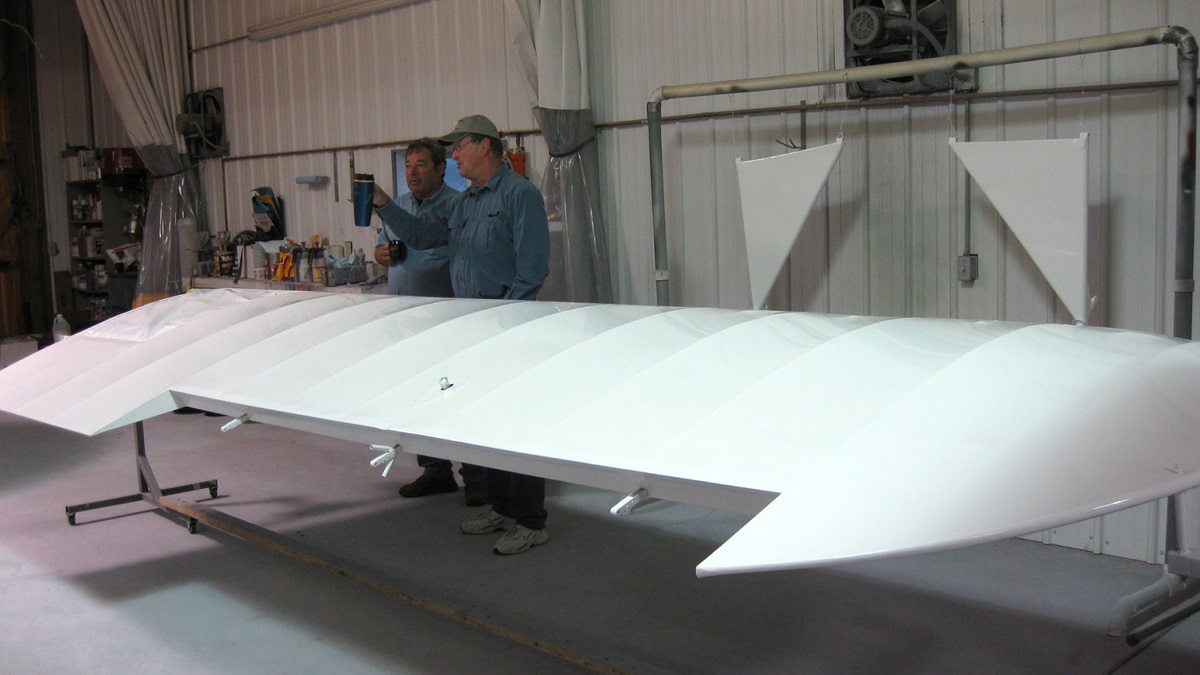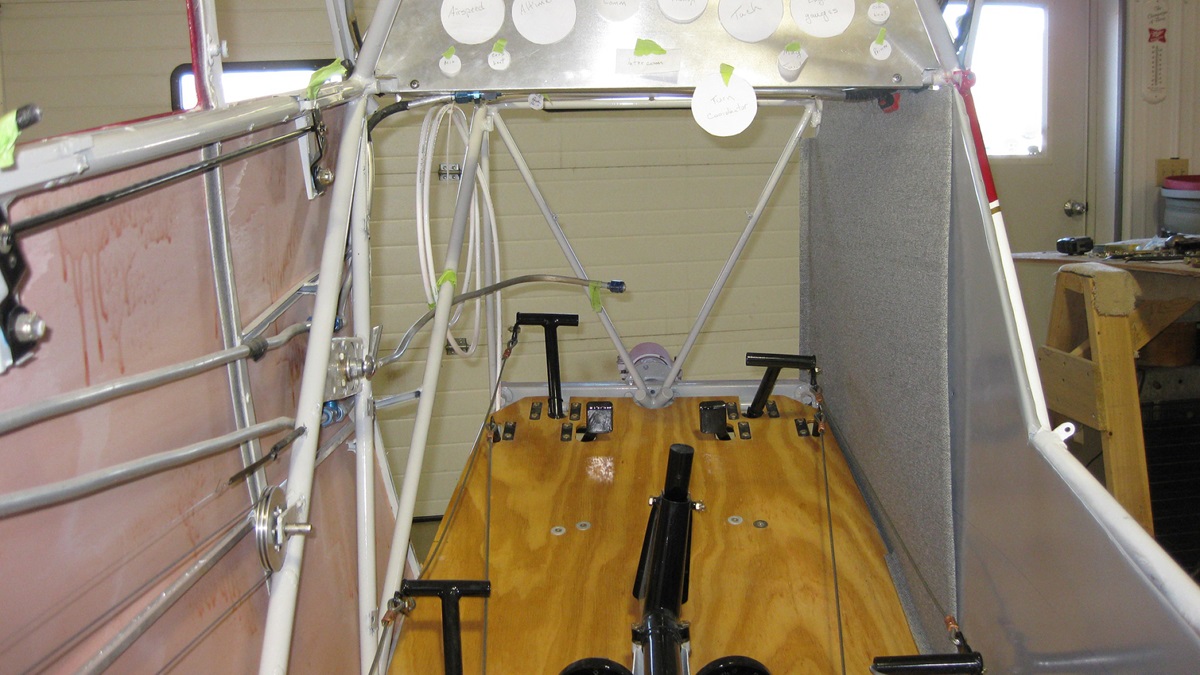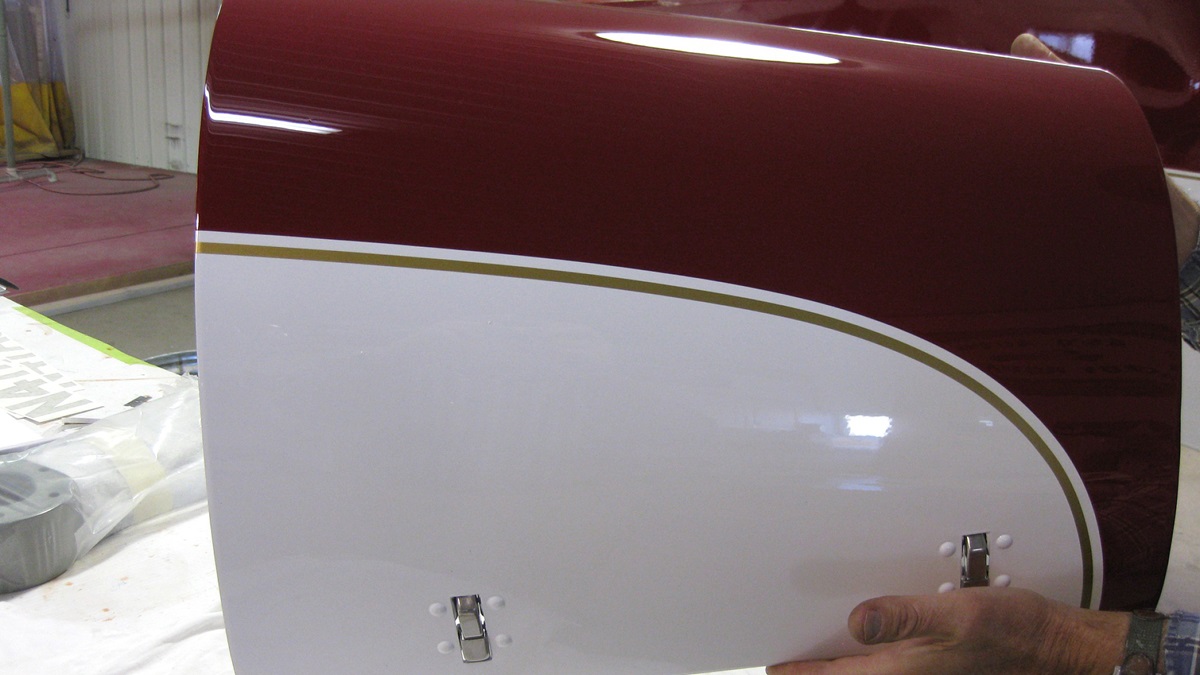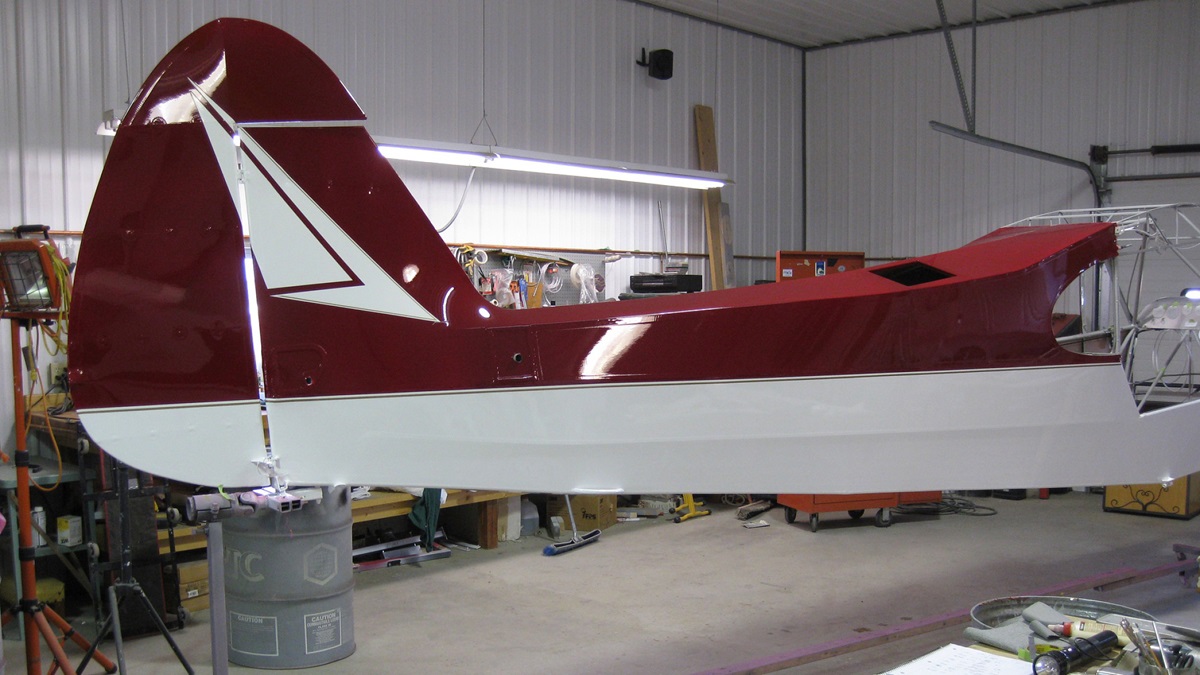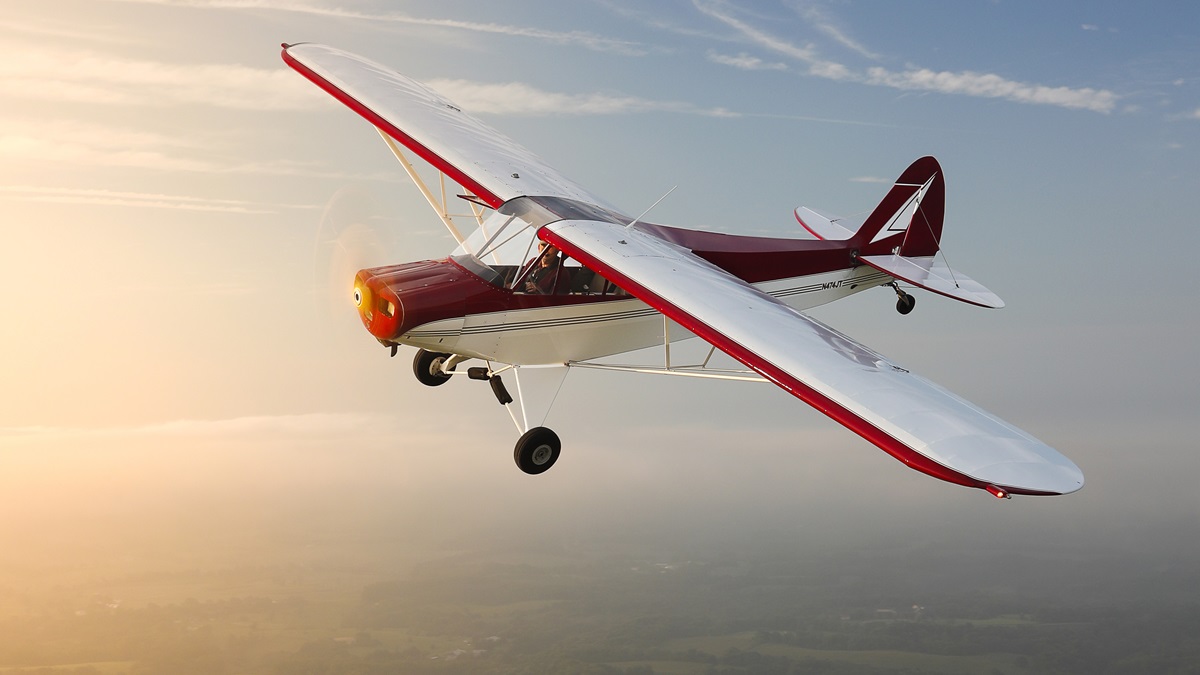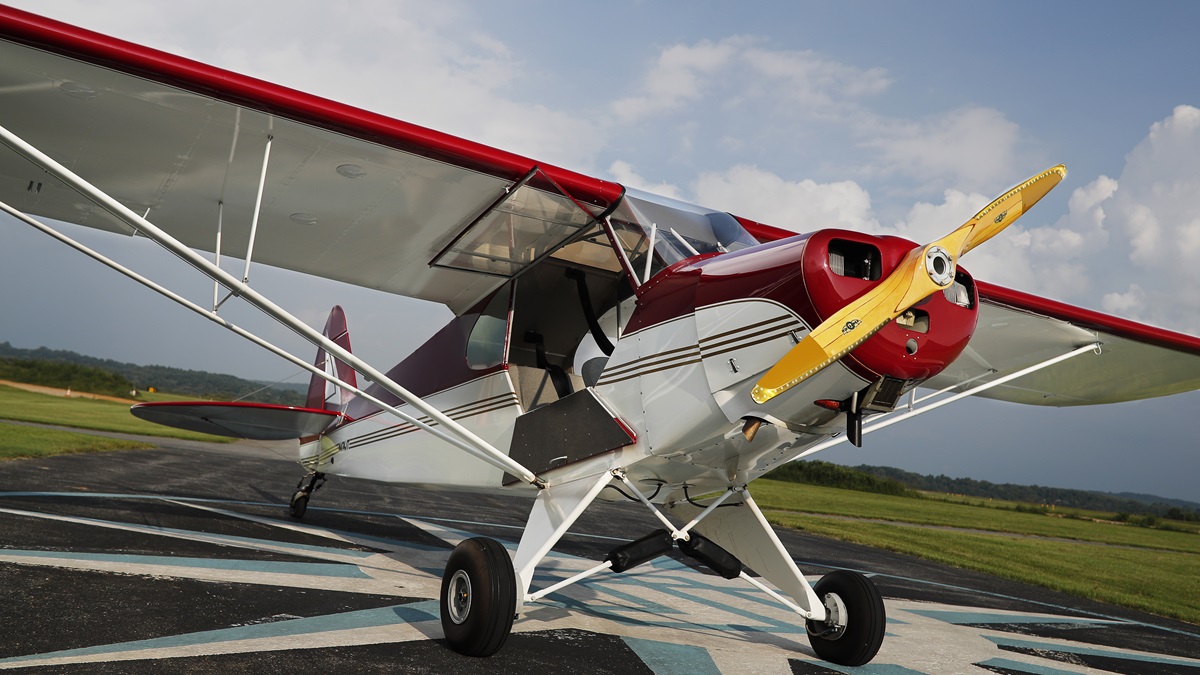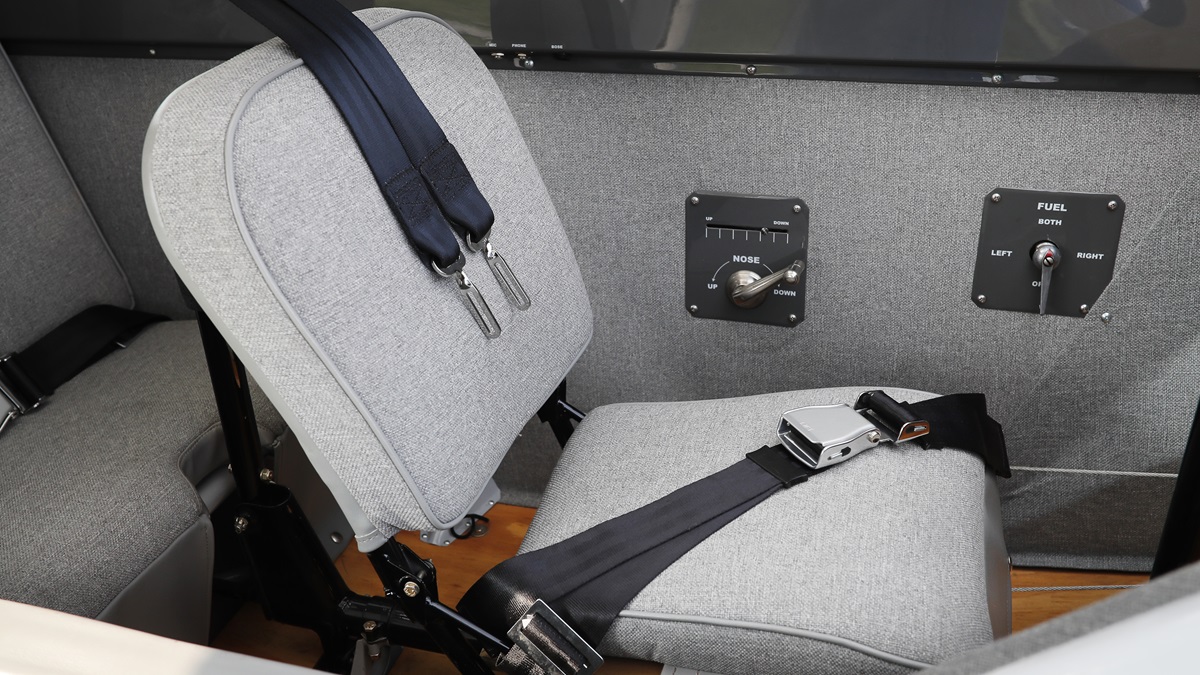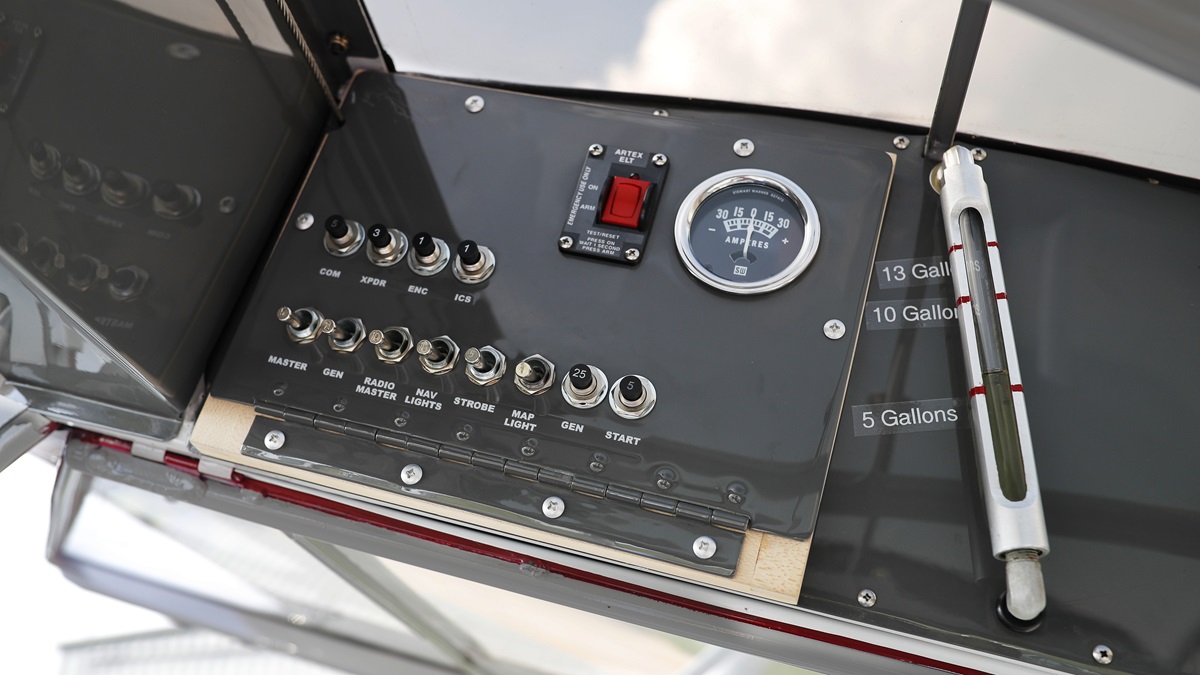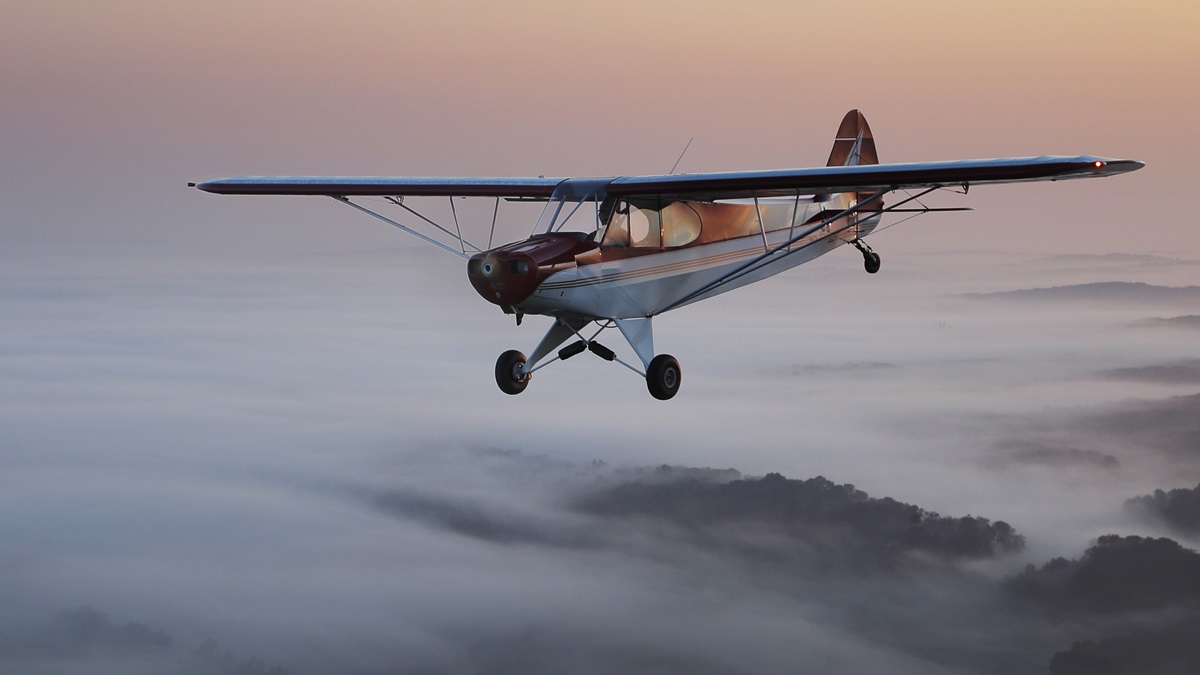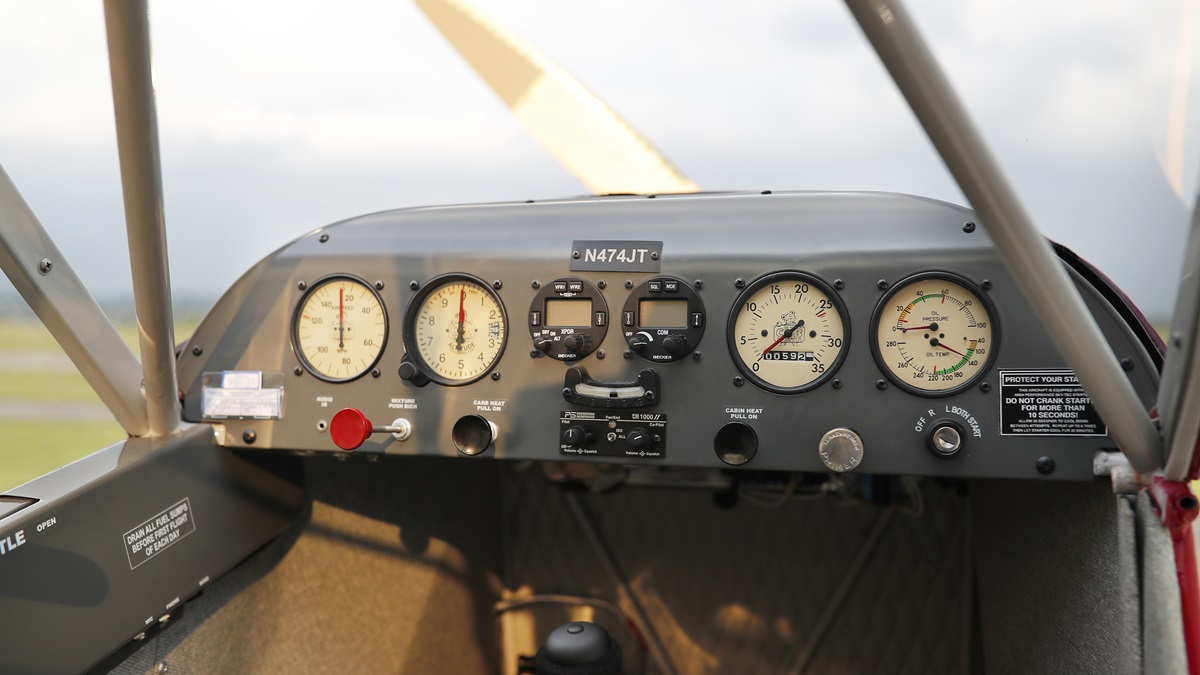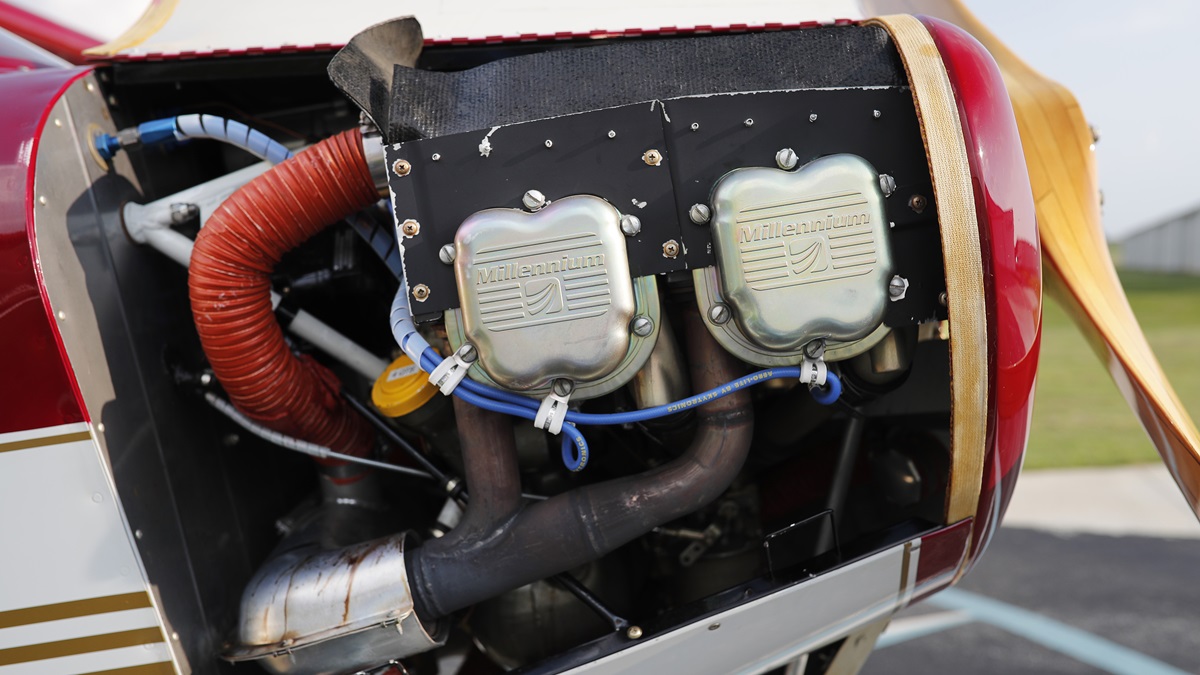'Big Sky' Cub Special
This hard-driving PA-11 doesn't show its age
Almost 70 years of hard Montana living takes a toll—but, somehow, this Piper PA–11 Cub Special seemed to have avoided paying.
It was May 2017, and the simple tube-and-fabric airplane that had come to the Big Sky Country shortly after it was built in 1947 gleamed in fresh crimson, gold, and white paint. Its frame had been sanded, reinforced, and repainted. Its fabric covering was taut as a drum head, and its windows were so clear you had to tap them to confirm they really were there. Its 90-horsepower Continental engine was freshly overhauled, along with every component and accessory.
There was new equipment, too: a starter, alternator, and a lightweight Becker radio and transponder and plugs for noise-cancelling headsets and digital music that would have seemed extravagant, or scarcely imaginable, in the austere era in which it was built.
“Nothing about this airplane makes a lot of sense—especially the economics of it,” said John McKenna, of Bozeman, Montana, who had the airplane rebuilt from the frame up over nine years. “I got emotionally attached to the airplane as soon as I bought it, and once the restoration began, well, I had to see it through to completion.”
McKenna doesn’t like to talk about how much he spent on the airplane, but he admits it’s well into six figures.
“The old girl needed a new haircut. She’s not a senior in high school anymore.” —John McKenna“It was like an abusive relationship at times, but I kept on coming back because I just didn’t know what else to do,” he said. “Sometimes it was a long-distance relationship, too. But once you start down a path, you want to see it through, even if people think you’re a fool for not just cutting your losses and walking away.”
McKenna hired Aerotronics of Billings, Montana, to do the avionics and electrical work, and craftsmen Alan Drain and Harden Graham did the airframe restoration, recovering, and painting. Piper purists would surely disapprove of some of McKenna’s customization and nods to modernity. The paint scheme isn’t the standard blue belly and yellow that came from the factory in Lock Haven, Pennsylvania; the N number has been changed (47 is for 1947, JT for John and wife Trish); and there are power adaptors and USB plugs.
“I didn’t want to make the airplane original,” said McKenna, who also owns and flies a Cessna 185 Skywagon and is a founding member of the Recreational Aviation Foundation. “The old girl needed a new haircut. She’s not a senior in high school anymore.”
Installing the electrical system required an FAA field approval that McKenna said was surprisingly difficult to obtain, but McKenna persisted. He had to suppress his own impatience and desire to get the airplane flying as soon as possible during the multiyear restoration.
McKenna said the PA–11’s gorgeous fit and finish hide the scars from the rough-and-tumble life it led in the decades before he bought it. The airplane was owned by a rodeo cowboy in eastern Montana for many years, and he used it, among other things, to hunt coyotes from the air. Logbook records show it was involved in some “minor skirmishes” over the years, McKenna said, and “may have been on its back a time or two” in wind storms. There were shotgun pellets lodged in its wing struts from errant shots at coyotes taken from the back seat.
When McKenna bought the airplane a decade ago, it hadn’t flown in more than a year. He and a friend drained the fuel tanks, put fresh avgas and oil in it, and flew it home on a ferry permit. When McKenna and his wife started washing the airplane, the faded blue paint started running onto the hangar floor.
“That’s when we decided to re-cover it—and re-covering it revealed all the sins from its past that hadn’t been properly addressed,” he said. “I got this airplane for what I thought was a pretty fair price, but it was a relationship I wasn’t sure I wanted to be in in the first place.
“I asked Alan [Drain] once whether everything on the airplane had to be perfect,” McKenna said. “Sometimes, just ‘really good’ is enough for me. But Alan told me, ‘I don’t know why you wouldn’t do everything the very best you can.’ So that’s the way things went. Everything on the airplane is as good as we knew how to make it.”
“I got this airplane for what I thought was a pretty fair price, but it was a relationship I wasn’t sure I wanted to be in in the first place.”—John McKenna“I stayed true to it, though, and now I feel pretty good about the way things turned out,” he said. “I can stand tall knowing I did the right thing by this airplane. It’s certainly in a much better place now than it was when I bought it.”
Astonishingly, McKenna sold the airplane soon after. His Skywagon was faster and could carry a great deal more gear. And Trish owned a PA–18 Super Cub that she loved and vowed to never sell.
The PA–11 buyer was AOPA, whose president, Mark Baker, is a Super Cub owner and wants to expose more pilots to grassroots, stick-and-rudder flying. The PA–11 will appear at AOPA Fly-Ins and other aviation events, and it will be used to make technique videos and for other purposes.
And Baker drove a hard bargain. After about two years of on-again, off-again negotiations, AOPA paid about $50,000 for the airplane, roughly one-third as much as McKenna put into it. AOPA also agreed to work closely with the RAF—an organization that expands GA access to backcountry airstrips—on future initiatives.
“AOPA isn’t paying anywhere close to what I’ve got in it,” McKenna said. “The association is getting a very good deal. I only agreed to it because it means the airplane’s going to a place where it will be seen, appreciated, and cared for—and it’ll show people another side of aviation. It’s not going to be tucked away in some quiet hangar somewhere, forgotten.”
Ballerina ankles
N474JT flew away from Montana in May 2017. I met the airplane in Minnesota and ferried it the rest of the way to AOPA headquarters in Frederick, Maryland. I’d seen photos of the airplane that documented its restoration, but the pictures didn’t do it justice. In person, it’s a jewel. Who knew a PA–11 could be this nice?
The short-lived design only was manufactured from 1947 to 1949, and it was sandwiched between two legends: The J–3 Cub that preceded it, and the PA–18 Super Cub that followed. The overlooked PA–11 is sometimes referred to as the “missing link” between its superstar brethren.
The PA–11 differs from the J–3 primarily because of its 90-horsepower engine, fully enclosed pressure cowl, wider boot cowl, and a more steeply sloped windscreen. Inside, the fuselage fuel tank was eliminated and avgas was stored in the left wing, and the seats shifted slightly aft so the airplane could be flown solo from the front seat. It’s also got more streamlined wing struts, and a downward-tilted engine mount.
“I can stand tall knowing I did the right thing by this airplane. It’s certainly in a much better place now than it was when I bought it.” —John McKennaN474JT carries double the normal amount of fuel in its wings. Instead of 18 gallons in one wing tank, it’s got 36 gallons in two tanks (one in the left wing root, the other in the right). That extra fuel is a holdover from its previous ranch life in Montana where it was based in a remote area where avgas was often quite distant, and it gives the airplane an incredible six hours’ endurance.
I topped off the C-90 engine with mineral oil (since the engine was still in its break-in period), and filled the fuel tanks for the 800-nautical-mile flight to Maryland. I had a handheld GPS for navigation but needn’t have brought it. AOPA Senior Vice President of Aviation Strategy and Programs Katie Pribyl was ferrying a PA–18 Super Cub on amphibious floats on the same route that day, so I simply followed her. We left at daybreak, picked up a tailwind across Wisconsin, and our airplanes were evenly matched in speed and range. (The PA–18 has twice as much horsepower, but it’s slowed by its amphibious floats.)
Even with an unusually heavy fuel load that put the PA–11 near its maximum gross weight, and a warm summer morning, the airplane was off the ground in less than 400 feet and climbed steadily at 60 miles an hour indicated.
Visibility from the front seat is much improved over a stock J–3, and the ailerons and elevator are well balanced and tight. The slop inherent in other pulley-and-cable control systems was almost totally absent in this well rigged, essentially brand-new airframe. The PA–11 rudder is light and authoritative and requires almost constant minor adjustments to keep the airplane coordinated in flight.
Turns in a PA–11 are a study in adverse yaw. The nose swings opposite the direction of turn without timely rudder inputs—so the pedals aren’t just decorations. Stalls are mushy affairs at idle power, and they don’t come easily, even while holding full aft stick. Add a little power, however, and the increased elevator authority makes stalls break crisply. Recovery is conventional and instantaneous when the pilot releases backpressure on the stick.
The PA–11 has heel brakes that required ballerina-like ankle flexibility to apply, and that’s just as well since they’re only needed to hold the airplane still during engine run-up. They’re unnecessary for directional control during takeoff and landing.
Our route took us over the southern edge of Lake Michigan, by the Chicago skyline, and into northern Indiana for our first fuel stop. Once on the ground, I was alarmed to see engine oil dripping out the breather line and streaked down the airplane’s belly. During three hours in flight, the engine had lost nearly half its four quarts of oil.
I called AOPA maintenance expert Carlo Cilliers, and he said not to be concerned. The excessive oil use was likely to diminish as the engine break-in continued, and I ought to run it harder on the next leg. I ran it wide open for the next six hours, and oil consumption steadily diminished.
At full throttle, 2,400 rpm, and 3,500 feet, the PA–11 burns about six gallons of avgas per hour at an indicated airspeed of 105 mph. Its top speed is 115 mph.
N474JT came with a wooden prop and a metal one. The metal prop provides noticeably better performance in both cruise and climb, but it weighs more, and this PA–11 has a paltry useful load of just under 400 pounds. With two FAA-sized adults, that leaves room for just eight gallons of avgas.
I assume the airplane had regularly been flown far over its published gross weight during its time in Montana, but McKenna played his cards close to the vest.
“Airplanes tend to fly better over gross than they do out of gas,” he said. “But I’m just speculating.”
Email [email protected]

